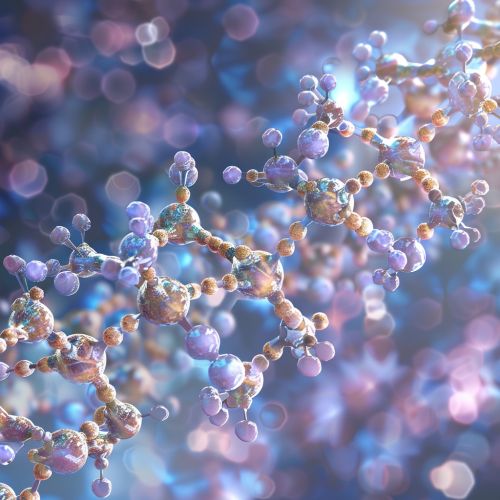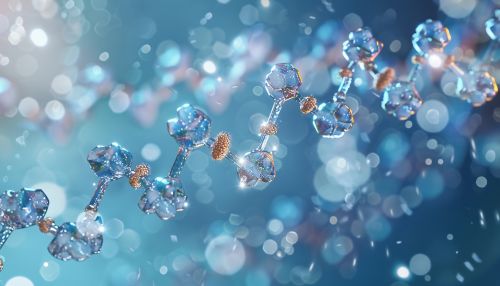Endothelin
Introduction
Endothelin is a potent vasoconstrictive peptide produced by endothelial cells. It plays a crucial role in various physiological and pathological processes, including vascular tone regulation, cell proliferation, and hormone production. Discovered in 1988, endothelin has since been the subject of extensive research due to its significant impact on cardiovascular health and disease.
Structure and Isoforms
Endothelin exists in three isoforms: endothelin-1 (ET-1), endothelin-2 (ET-2), and endothelin-3 (ET-3). These isoforms are encoded by separate genes and have distinct tissue distributions and functions. ET-1 is the most studied isoform and is primarily involved in vascular homeostasis. ET-2 and ET-3, although less understood, also contribute to various physiological processes.
Molecular Structure
Endothelins are 21-amino acid peptides with two disulfide bridges that stabilize their structure. The primary sequence of ET-1 is as follows: Cys-Ser-Cys-Ser-Ser-Leu-Met-Asp-Lys-Glu-Cys-Val-Tyr-Phe-Cys-His-Leu-Asp-Ile-Ile-Trp. The disulfide bridges form between Cys1-Cys15 and Cys3-Cys11, creating a characteristic "hairpin" structure.
Biosynthesis and Secretion
Endothelin is synthesized as a precursor molecule, preproendothelin, which undergoes several enzymatic cleavages to produce the mature peptide. The initial cleavage by signal peptidase removes the signal peptide, yielding proendothelin. Subsequently, endothelin-converting enzyme (ECE) cleaves proendothelin to generate the active endothelin peptide.
Regulation of Endothelin Production
The production of endothelin is tightly regulated by various factors, including hypoxia, shear stress, and certain cytokines. For instance, hypoxia induces endothelin production via hypoxia-inducible factor (HIF), while shear stress modulates endothelin expression through mechanotransduction pathways.
Receptors and Signaling Pathways
Endothelin exerts its effects by binding to specific G-protein-coupled receptors, known as endothelin receptors. There are two main types of endothelin receptors: ETA and ETB. These receptors have distinct tissue distributions and mediate different physiological responses.
ETA Receptors
ETA receptors are predominantly expressed in vascular smooth muscle cells and mediate vasoconstriction and cell proliferation. Upon binding to ET-1, ETA receptors activate phospholipase C (PLC), leading to the production of inositol trisphosphate (IP3) and diacylglycerol (DAG). This signaling cascade results in increased intracellular calcium levels and subsequent smooth muscle contraction.
ETB Receptors
ETB receptors are primarily found in endothelial cells and play a role in vasodilation and clearance of endothelin from the circulation. Activation of ETB receptors stimulates the production of nitric oxide (NO) and prostacyclin, both of which are potent vasodilators. Additionally, ETB receptors facilitate endothelin clearance by promoting its uptake and degradation.
Physiological Functions
Endothelin is involved in a wide range of physiological processes, including vascular tone regulation, cell proliferation, and hormone production.
Vascular Tone Regulation
Endothelin is a key regulator of vascular tone, balancing vasoconstriction and vasodilation to maintain blood pressure homeostasis. ET-1, through ETA receptor activation, induces vasoconstriction, while ETB receptor activation promotes vasodilation via NO and prostacyclin release.
Cell Proliferation and Differentiation
Endothelin influences cell proliferation and differentiation in various tissues. For example, in the cardiovascular system, ET-1 promotes smooth muscle cell proliferation, contributing to vascular remodeling and atherosclerosis. In the nervous system, endothelin modulates neuronal growth and differentiation.
Hormone Production
Endothelin also regulates the production of several hormones, including aldosterone, vasopressin, and atrial natriuretic peptide (ANP). ET-1 stimulates aldosterone secretion from the adrenal cortex, influencing sodium and water balance. It also promotes vasopressin release from the posterior pituitary, affecting water reabsorption in the kidneys.
Pathophysiological Roles
Dysregulation of endothelin signaling is implicated in various pathological conditions, including hypertension, heart failure, and pulmonary arterial hypertension (PAH).
Hypertension
Elevated levels of ET-1 are associated with hypertension, a condition characterized by persistently high blood pressure. ET-1 contributes to hypertension by inducing vasoconstriction, promoting sodium retention, and stimulating the renin-angiotensin-aldosterone system (RAAS).
Heart Failure
In heart failure, increased endothelin levels exacerbate the condition by promoting vasoconstriction, myocardial hypertrophy, and fibrosis. These effects lead to increased cardiac workload and impaired cardiac function.
Pulmonary Arterial Hypertension
PAH is a severe condition characterized by elevated blood pressure in the pulmonary arteries. ET-1 plays a central role in PAH pathogenesis by inducing pulmonary vasoconstriction and vascular remodeling. Elevated ET-1 levels are commonly observed in PAH patients, and endothelin receptor antagonists are used as a therapeutic approach.
Therapeutic Implications
Given the significant role of endothelin in various diseases, targeting the endothelin pathway has therapeutic potential. Endothelin receptor antagonists (ERAs) are a class of drugs that block the effects of endothelin by inhibiting its receptors.
Endothelin Receptor Antagonists
ERAs are classified into two categories: selective ETA receptor antagonists and dual ETA/ETB receptor antagonists. Selective ETA antagonists, such as ambrisentan, specifically block ETA receptors, reducing vasoconstriction and cell proliferation. Dual antagonists, such as bosentan, inhibit both ETA and ETB receptors, providing a broader therapeutic effect.
Clinical Applications
ERAs are primarily used in the treatment of PAH, where they have been shown to improve exercise capacity, hemodynamics, and survival. Additionally, ERAs are being investigated for their potential in treating other conditions, such as systemic hypertension and chronic heart failure.
Research and Future Directions
Ongoing research aims to further elucidate the complex roles of endothelin in health and disease. Emerging areas of interest include the development of novel ERAs with improved efficacy and safety profiles, as well as exploring the potential of endothelin-targeted therapies in other diseases.
Novel Therapeutic Strategies
Researchers are investigating new therapeutic strategies that target the endothelin pathway, including combination therapies that simultaneously inhibit multiple pathways involved in disease progression. Additionally, gene therapy approaches are being explored to modulate endothelin expression and signaling.
Biomarkers and Diagnostics
Identifying reliable biomarkers for endothelin activity is another area of active research. Such biomarkers could aid in the early diagnosis and monitoring of diseases associated with endothelin dysregulation, improving patient outcomes.
Conclusion
Endothelin is a critical regulator of vascular function and plays a significant role in various physiological and pathological processes. Understanding the complex mechanisms of endothelin signaling and its implications in disease has led to the development of targeted therapies, offering hope for patients with conditions such as PAH and hypertension. Ongoing research continues to uncover new insights into the endothelin pathway, paving the way for novel therapeutic approaches.
See Also
- Vasoconstriction
- Endothelial Cells
- Pulmonary Arterial Hypertension
- Atherosclerosis
- Renin-Angiotensin-Aldosterone System
References


